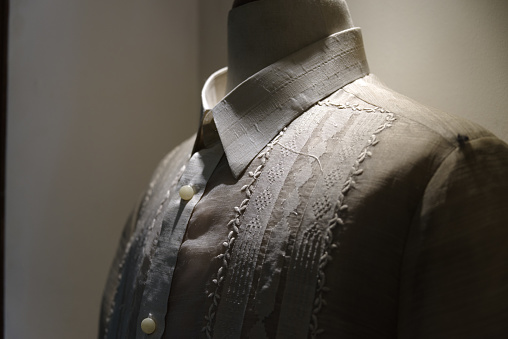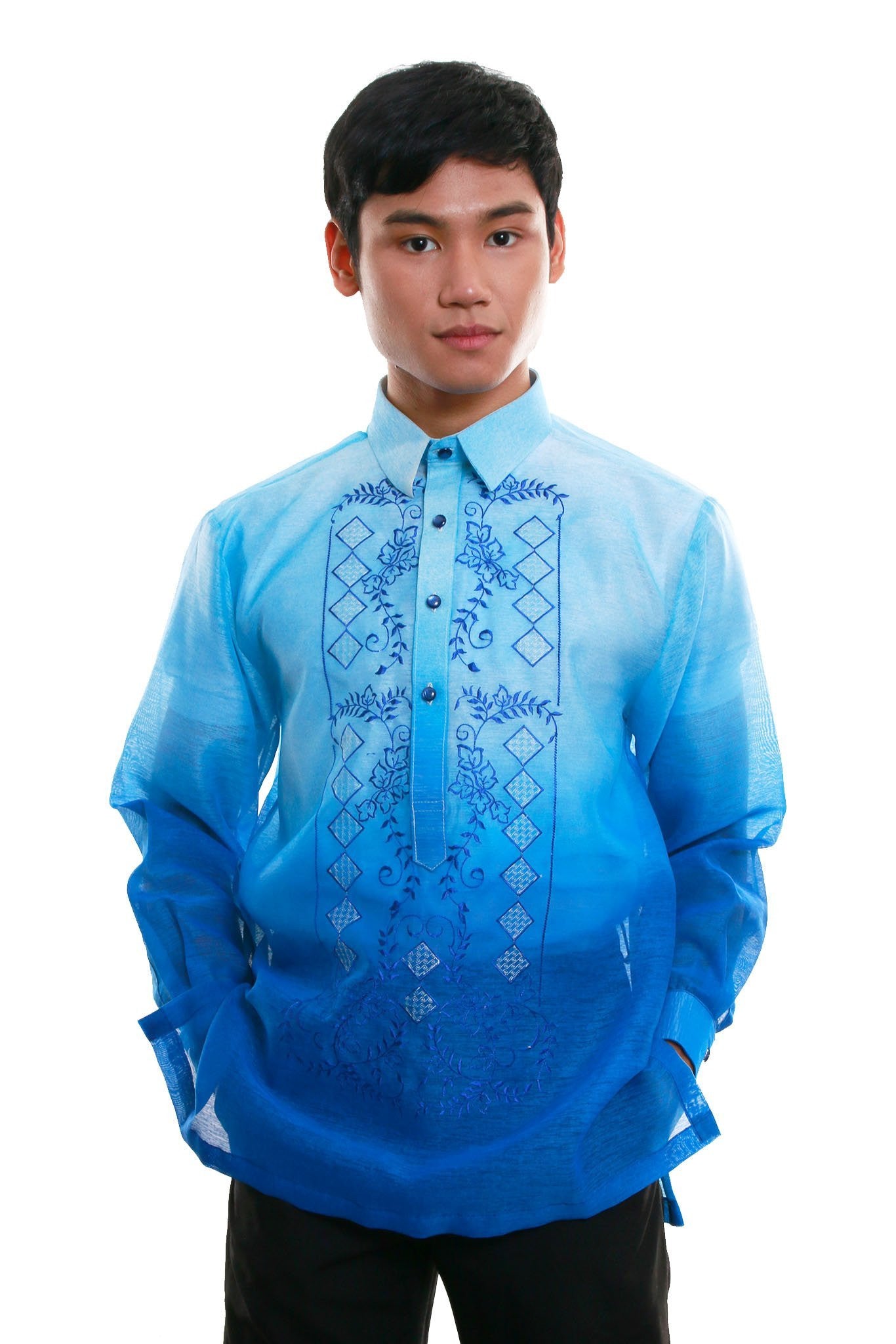Getting My Formal Barong Tagalog To Work
Table of ContentsA Biased View of Where To Buy Barong Tagalog Near MeNot known Facts About Barong TagalogGetting The Barong Tagalog For Women To Work

It is a common formal or semi-formal outfit in Filipino culture, and also is used untucked over an undershirt with belted trousers and also dress footwear. Baro't saya is the feminine matching of barong tagalog, with the Maria Clara gown being the official version of the last. Barong tagalog was additionally called ("external t shirt") in Philippine Spanish. filipino barong tagalog. The term is generally not utilized.
Rather, the name was coined to identify the outfit as indigenous (hence "tagalog", i. e. ), in contrast to the styles of gown of Europeans as well as various other international societies. Description [modify] Barong tagalog used with a salakot. The lady is using a. Barong tagalog is an official shirt generally made of sheer light-weight however tight textile called (normally woven from pia or abac fibers).
Barong tagalog can vary considerably in terms of design and also product made use of, yet they share common attributes of having long sleeves, embroidery, being buttoned (halfway or straight down the chest), and the lack of pockets. They are likewise used loosely and also have slits on both sides. Historically, the material utilized for barong tagalog depended on the social class of the user as well as the formality of the occasion.
The Facts About Barong Tagalog Uncovered
The high quality of the product as well as the details of the embroidery were usually indications of the status and wealth of the wearer. The embroidery of the barong tagalog are commonly put on a rectangular section on the front of the breast (called pechera, "t-shirt front", from Spanish pecho, "breast"), and/or over the entire t shirt (sabog, from Tagalog for "scattered"). Visit Your URL.
Amongst Tagalog men, they were commonly coupled with a rectangle of highly decorated fabric called the salaual or salawal used knee-length as well as attracted up in the center (like an Indian or Thai as well as Cambodian ); while in females they were coupled with a wraparound skirt called the.
Nevertheless, in the Visayas, other than similar baro (which had much shorter sleeves) as well as salaual combinations, guys also put on colorful robe-like as well as coat-like versions that could include well listed below the knees (understood as the marlota and also baquero in Spanish, respectively). These were occasionally belted at the waist. Among Tagalogs, red dyes as well as gold trimmings were indicative of being a member of the aristocracy () or the warrior caste () - her latest blog.

Some Known Incorrect Statements About Barong Tagalog
The couturier Jose "Pitoy" Moreno has actually hypothesized that this transitional style of tee shirt was the camisa de chino of later centuries, that makes it a forerunner to the barong tagalog. Depictions of members of the upper classes (consisting of natives and also) in the 18th century revealed that they usually used European-style apparel. over here.
These were a lot longer than the modern-day barong tagalog, getting to down to a little over the knees. They were also frequently striped with bold colors like blue, red, or eco-friendly. Nonetheless, they currently presented hallmarks of the modern-day barong tagalog, including being constructed from large nipis material, embroidery, long sleeves, and a loosened shape with slits on both sides - Go Here.
Early examples of barong mahaba normally had high-standing collars or even Elizabethan-style ruffs with narrow cravats. Barong mahaba were usually used with colorful straight-cut trousers with stripes, checkers, or plaid-like patterns (typically made from imported cambaya, rayadillo, and guingn fabrics), stovepipe hats (sombrero de copa), and a type of stitched velour or natural leather slip-on footwear called corchos. The sheer fabric used by barong mahaba additionally demanded the using of an undershirt, known as camisn or camiseta, which was also endured its very own by citizens. By the 1840s, barong mahaba greatly dropped out of style. In this period, read what he said it progressed into the contemporary "classic" barong tagalog, being much shorter with much less ostentatious folded up collars, while still maintaining the sheer material and various other baro features.